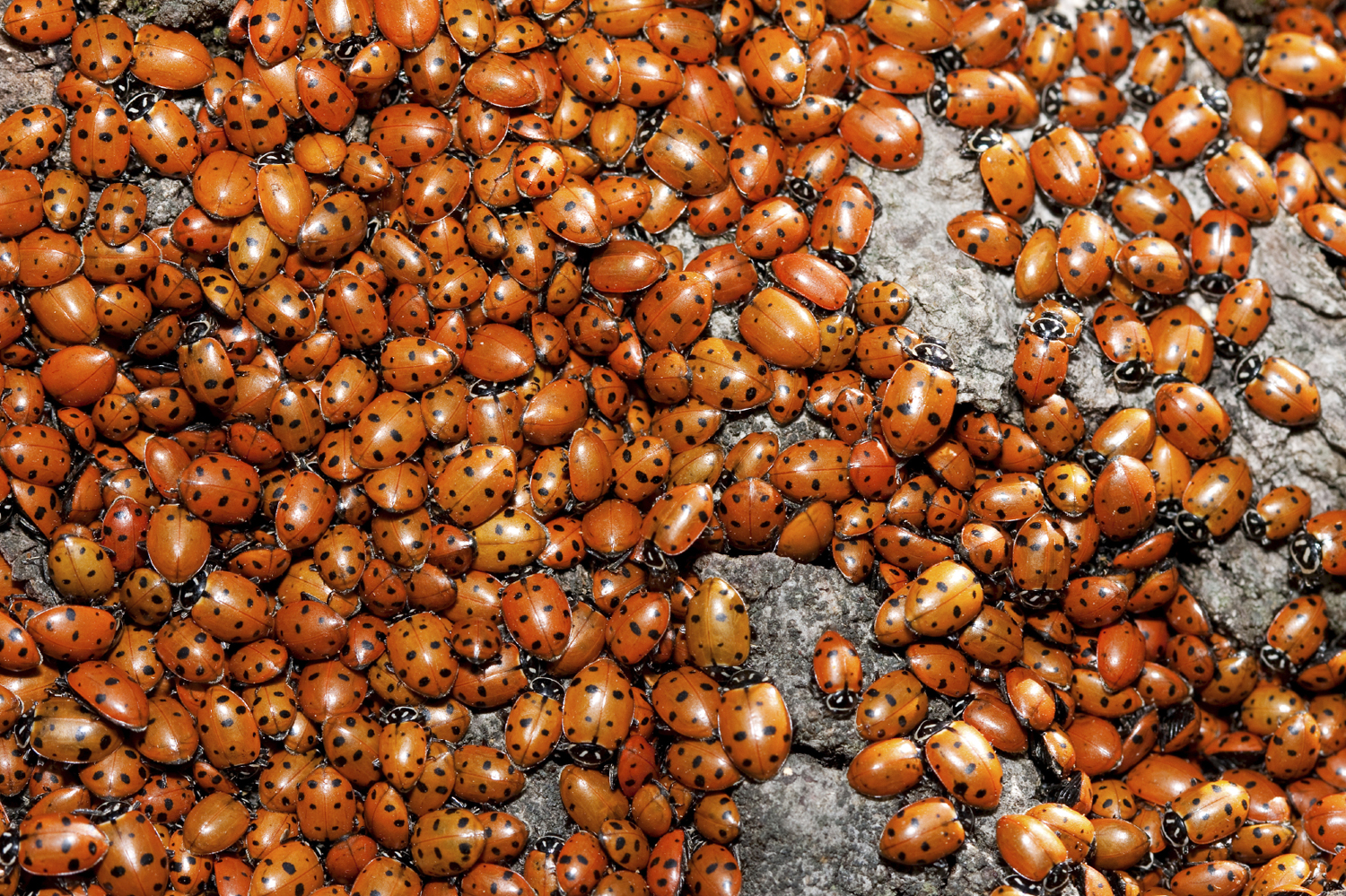Entomology is not to blame for annual ladybug swarms

Oh no! An adorable infestation!
No, it’s not a boatload of teddy bears or squealing kittens. Instead, it’s thousands of ladybugs, swarming in your kitchen, on your bedroom walls, and in your bathroom. When they die, they give off an offensive odor and can stain white walls yellow as they expire.
Every year, the rumor mill churns out a myth that the ladybugs are actually part of a Virginia Tech plot. Conspiracy theorists claim that the spotted beetles are purposely released by the College of Agriculture and Life Sciences’ Department of Entomology as a vector control to keep the stinkbug population down.
But that’s just humbug, said Eric Day, manager of Virginia Cooperative Extension’s Insect Identification Laboratory in Blacksburg, Va. The rumors started as soon as the invasive species took hold.
“Ever year, I get calls from homeowners who have swarms of the bugs in their homes and they want to know if we are responsible,” said Day. “And every year I tell people that we had nothing to do with it.”
Multicolored Asian lady beetles, the actual name of the invasive bugs, were introduced in the South between 1916 and 1985 to rid pecan crops of destructive aphids, not stinkbugs.
Though it is not unusual to see them in the spring or fall, infestations usually occur in October and continue for a few more months.
“‘Lady Beetle Day’ is the first warm day after Oct. 15,” Day said. “The beetles start moving and looking for overwintering sites.”
And this is when people start seeing swarms of them flying around their yards and landing on the outsides of buildings and barns. They are aggregating by sight and smell, Day said. They then move into the walls and interiors of homes to spend the winter.
In the spring, Day starts getting the phone calls again.
“In March, I get a few calls as the beetles come out of the overwintering sites inside the walls and attics and come into the living quarters of houses,” he said.
Day isn’t sure how the rumor got started, but the Internet has helped it spread quicker than, well, a ladybug infestation.
Though the beetles disappeared for a while and started reappearing in the late 1980s, the rumors never went away.
“I’ve said it before, and I’ll likely have to say it again, ‘Ladybugs are not being bred and released by the entomology department’,” Day said.





